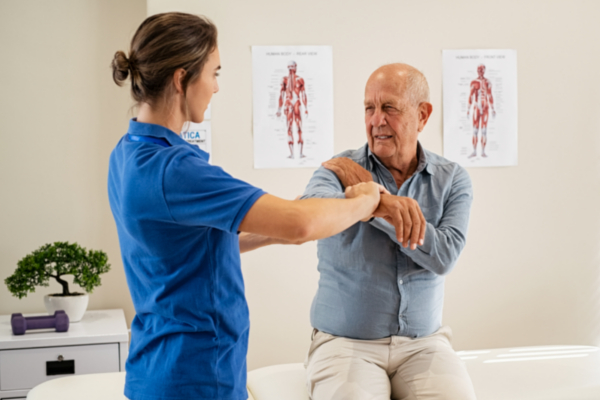
An estimated 100 million Americans are affected by chronic pain each year. These numbers are predicted to increase as the country’s aging population grows. More than an inconvenience, chronic pain has the potential to affect one’s quality of life, including the inability to perform daily tasks or keep a job.
Methods to treat chronic pain are also changing. Until recently, doctors would often prescribe pain medications but have decreased this practice significantly, due to the opioid epidemic.
Alternative treatments are now considered, including a combination of physical therapy, massage, over-the-counter pain medications and acupuncture. The result is not only designed to lessen the pain experienced but help patients improve their mobility and enjoy life again.
Benefit of Physical Therapy
Of the available options to treat chronic pain, physical therapy does more than ease or manage discomfort. Treatment can help address why the patient is feeling a particular sensation in the first place and strengthen related muscle groups to improve endurance and range of motion. If your doctor has recommended physical therapy for chronic pain, here’s what you can expect.
What Is Chronic Pain?
Those living with a chronic condition may experience varying degrees of pain for several months to years. Sources include arthritis, a herniated disc, cancer, a fracture or sprain that never healed and nerve damage. In select cases, imaging and other testing methods may reveal no specific cause.
In all cases, the pain tends to affect a particular muscle group or joint and is frequently severe enough to impact concentration and your ability to perform certain motions. With time, individuals may find they are no longer able to move a joint or muscle at all due to the resulting pain.
Chronic pain is different than acute pain, when an individual feels a sudden sharp sensation that gradually goes away when the injured area heals. For many patients with chronic pain, the injury may heal but the pain remains.
Evaluation for Chronic Pain
When you first meet with a physical therapist to address chronic pain:
- You will be asked about the discomfort you’re experiencing, including how often its felt, if any factors decrease the sensation, and how it has impacted your life.
- Your physical therapist may ask about your medical history and previous treatments – including medications – and their effects.
- Your range of motion, muscle strength, posture, balance and endurance will be assessed. You should communicate what you’re experiencing as you perform certain motions.
Treating Chronic Pain with Physical Therapy
To address the source of chronic pain, a physical therapist works to determine why certain muscle groups or tissues are weak or stiff. Exercises are designed to reduce stress placed on these areas, with the goal of alleviating pain and improving both your mobility and ability to function each day.
Although treatment plans are based on your specific situation and condition, they may involve the following.
Exercise
Exercises assist with strengthening muscles and joints, improving mobility and help break up the brain’s signals that any motion in the area results in pain. As such, exercise for chronic pain ultimately helps with retraining your thoughts.
Depending on the area and issue affected, your treatment plan may include:
- Low-impact aerobic exercises to increase heart rate, without placing additional stress on your joints.
- Strengthening exercises, often with resistance bands or your own weight. Your core will likely be involved.
- Exercises targeting the area where you’re experiencing pain.
- Stretching for both warm-ups and recovery.
Passive Therapy
Other more passive forms of physical therapy may be used to decrease pain and improve motion:
- Dry needling to address muscle knots and trigger points
- Heat and ice to lessen inflammation and pain
- Massage to improve blood flow
- Pain Neuroscience Education (PNE) to explain why pain is occurring the way it is.
- How to move without pain, including strategies for walking, lifting, sitting and running.
Have you been living with chronic pain for months or years? The physical therapists at Integrated Rehab can address the source of your pain and help improve your daily life.
To learn more about our services, contact us today.

